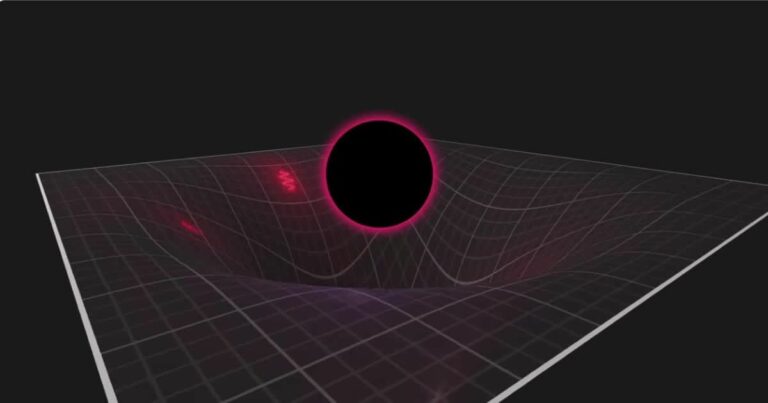Scientists in the Lab successfully generated a Black Hole that started emitting light similar to authentic Black Holes.
A new solar system-like model could be a window to the much excused radiation-extra that is theorized to be emanated by the tiny ones.
A group of physicists fabricated a chain of atoms purposely made to resemble the blackhole’s event horizon and by working on Hawking Radiation, which is particles coming from the disturbances of quantum fluctuations which happens around the blackhole’s spacetime, they were able to confirm to this kind of behavior.
This, as they assert, could potentially resolve the tension between two presently incongruent frameworks describing the cosmos: the principles of all gravity manifestations as the one general spacetime field are described by the theory of general relativity, and the behavior of discrete particles by non-probabilistic mathematics, namely say quantum mechanics.
Both considered on their own, the general relativity and the quantum mechanics imply that for a unified theory to be developed, the two theories must, somehow, proximized.
Black hole – distant places from others, where the strangest and most incredible objects in the cosmos are to be found. The background fill of black in an image can be compared to the reality that surrounds us. Although black on a screen seems inconsequential, it illustrates the role of a void in spatial dimensions that deserves more detail.Not even light speed.
It is the black hole mass that determines the boundary with curved space-time and is known as event horizon A moment an object stops existing inside its vacuum there is nothing else that we can actually conceive to its submission, even with detailed analysis the information is just not enough. While in 1974, Stephen Hawking proposed that quantum fluctuations at the event horizon get disrupted ceasingly and then they radiate the kind of thermal radiation.
In a nutshell, if this Hawking radiation appears—which is extremely unlikely—we cannot observe any change in the total energy till now as it is way too faint. Perhaps that shimmering soda that is the Universe is what we’re mining here, we’ll forever be caught in an unsatisfying state of stasis. We can do such investigations of the black hole properties instead of creating them in laboratory where they can be investigated.
Although these attempts aren’t the first to be created, a current one launched by Lotte Mertens from the University of Amsterdam’s Department of Psychology in the Netherlands contributes new results.
Such kind of atoms had been only connected together in a straight chain, on which electron changed its positions thus ‘hopping’ from one position to the other. Manipulating the extent to which this jumping could be done wouldn’t be a problem. The particles would simply disappear, and this would automatically mean that the nature of the wave property was being altered. In effect, a kind of an event horizon would be created that blocked space-like behavior.
The ‘phenomenon’ the experts refer to in this instance took the form of an increase in temperature in accordance with theoretical expectations from a true black hole system, said the team but only once the chain was in excess of the event horizon.
In this way of looking at the issues, there is a possibility that the entanglement of particles that are in the region near the event horizon, which is at a boundary between the inside and outside of the black hole, may be one key formative factor for Hawking radiation generation.
The simulated Hawking radiation was characterized by thermal properties within the transition range of the amplitude, assuming FLRW (FLRW represented a flat spacetime). This observation suggests that the thermal behavior of Hawking radiation may hold true only under very specific circumstances, and will assume this trait corresponding to both gravity and spacetime curvature.
It is not completely clear whether a model like this would allow for quantum gravity study, it in any case gives an opportunity to explore the evolution of Hawking radiation in a simpler and more predictable surroundings, rather than actually under the inescapable influence of black hole formation dynamics. Also, it is very easy to use and can serve to represent many confounding factors that would otherwise be difficult to reproduce experimentally, they added.
“This entails expanding areas and phenomena where seemingly noncorrelated aspects happen like for instance quantum mechanics and gravity along with curved spacetimes in condensed matter models.”
The study had been published in Physical Review Research in 2021.
Do not forget to share your opinion with us to provide you with the best posts !




0 Comments